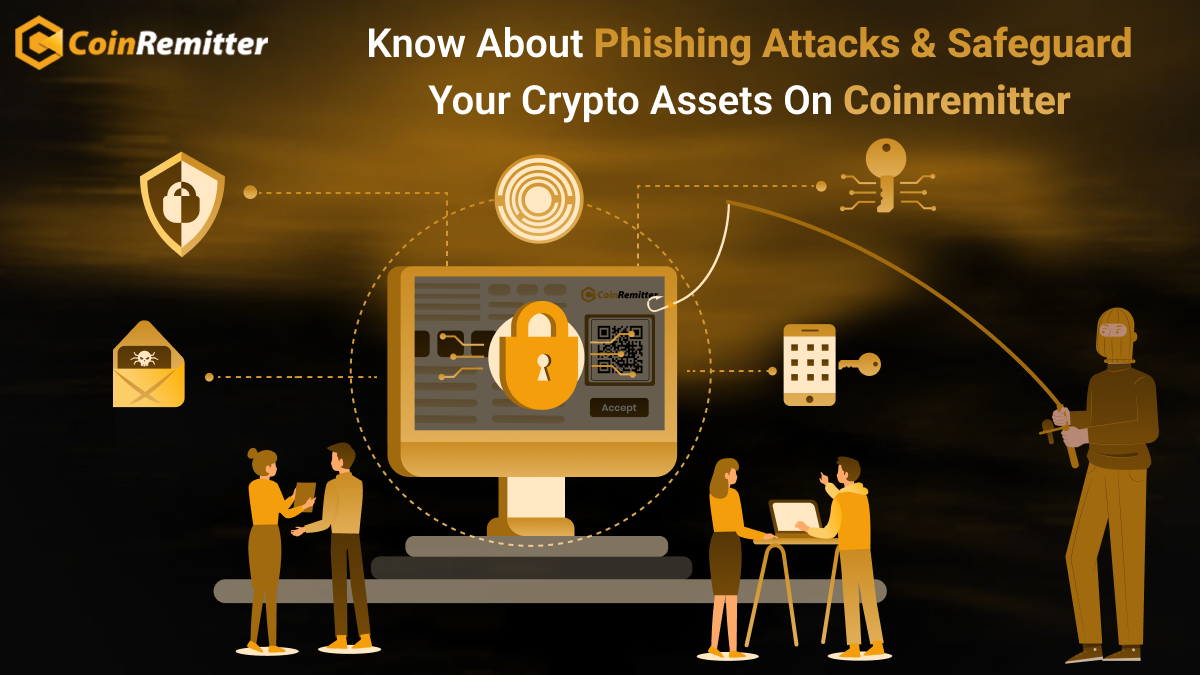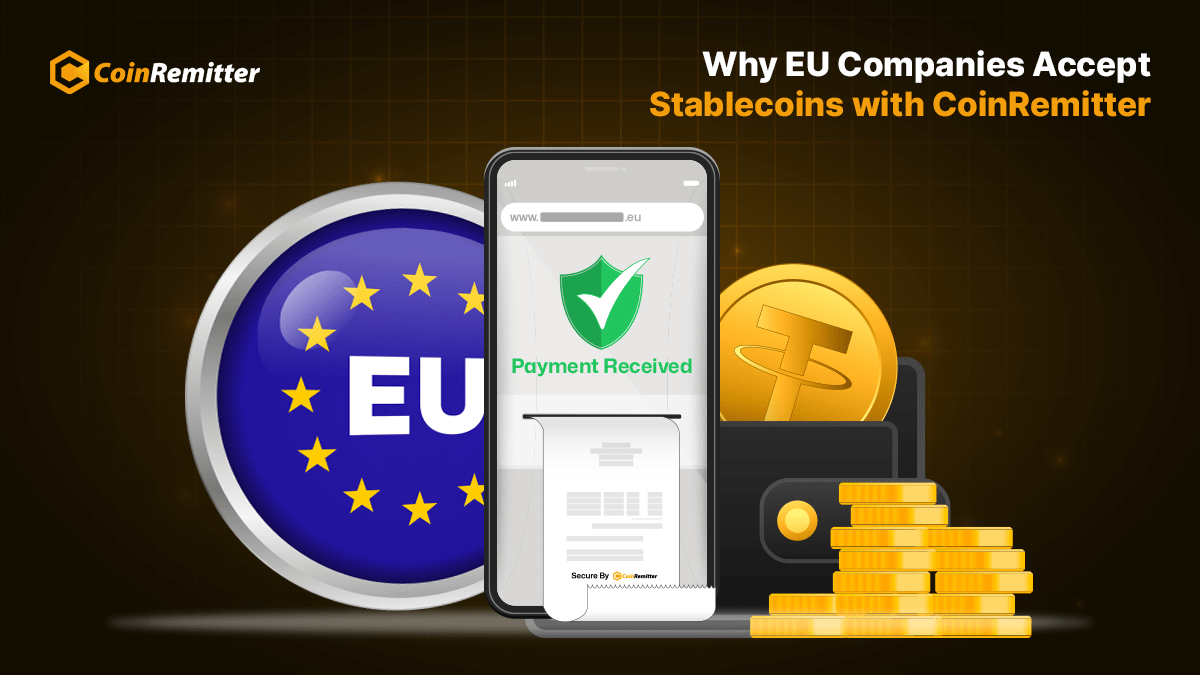Know About Phishing Attacks & Safeguard Your Crypto Assets on Coinremitter

What is a phishing attack?
The cyber phishing attack is intended to trick individuals into submitting/giving up sensitive information (such as private keys, passwords, etc.). Initially, such attackers may look like a legitimate platform or individual. But they may steal and misuse your sensitive information to execute their intended crypto scam.
Below are the most common types of cyber phishing you should be aware of:
- Email phishing
- Smishing and Vishing
- Clone phishing
- Pharming
- HTTPS phishing
Email Phishing
This is the most popular as well as the most common medium of cyber phishing. Scammers can generate email addresses with fake domains that may look like legitimate organizations. The next step consists of sending numerous email requests to targets to steal their sensitive information.
Smishing and Vishing
Smishing (SMS+phishing) is a phishing attack, where attackers trick individuals via text messages and make them click malicious links or download malware into their devices. On the other hand, vishing (voice+phishing) consists of attacking individuals through voice calls. They may pretend as trusted entities and make individuals reveal confidential information or perform certain actions.
Clone Phishing
In clone phishing, attackers use social engineering techniques to replicate a genuine website or email. Such clones may also contain some modifications that may push individuals to submit confidential information. Clone phishing attacks generally focus on collecting the login credentials of targets. For example, attackers may create a website or an email template exactly like Coinremitter and steal the login credentials of your Coinremitter account once you enter them there. Your login credentials may be used to steal your crypto assets.
Pharming
Just like clone phishing, attackers replicate a genuine website. But this can’t be performed using social engineering techniques. Attackers manipulate the DNS (Domain Name System) and redirect individuals to malicious websites. Then attackers perform DNS cache poisoning to execute the phishing attack through malicious websites. The intention of this phishing attack is to collect sensitive information such as login credentials, credit card details, etc.
HTTPS Phishing
HTTPS phishing is a type of cyber phishing attack, where attackers create SSL/TLS-certified websites just to make them look secure, just like ones that use HTTPS for secure communication. Cybercriminals obtain SSL/TLS certificates on deceptive websites created by them to execute HTTPS phishing attacks.
How to Protect Your Funds from Such Attacks on Coinremitter?
- Closely examine misspelled or incorrectly spelled domains and unmatched subdomains. Beware of unnecessarily long URLs. For example, The domain name of Coinremitter’s URLs is ‘coinremitter.com’. Anything else except that in the name of Coinremitter could be a malicious website.
- Look for SSL certificates while accessing a website. Click the lock pad from the web address bar and verify the SSL certificate if you suspect any malicious website misusing any reputed name. If you’re relying on Coinremitter, make sure that the certificate is issued to coinremitter.com only to avoid potential crypto scams.
- Verify the email address of the sender and check if there are any minimal variations in the domain. Coinremitter only communicates using [email protected]. The attacker may have used a similar email address containing minor variations. Any other email address other than [email protected] may be an attempt to a phishing attack. Verify offers & benefits on Coinremitter’s official website or social media handles if you receive them via email to detect a possible pharming or clone phishing attack.
- Keep reporting suspected phishing attacks to Coinremitter’s support staff and your email service provider.
- Enable multi-layer security on Coinremitter before you start accepting crypto payments to protect your crypto assets. Use two-factor authentication and the login shield to prevent unauthorized logins.
- Check unauthorized usage in the login history and report to Coinremitter if you find anyone illegally logging into your Coinremitter account to suspect a crypto crime.
- Keep withdrawing your funds regularly and enable auto-withdrawal if possible for the security of your crypto assets.
- Keep changing your passwords frequently and avoid sharing them at random places (e.g. with online platforms or individuals). Use a trusted device to browse Coinremitter and use incognito mode on public devices to keep your crypto assets safe.
Over 38,000 merchants are using CoinRemitter
Join them now



